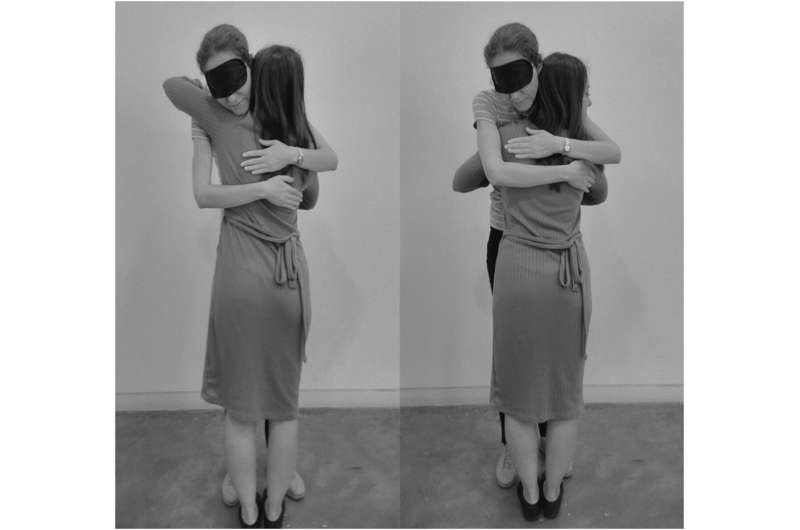November 25, 2021 report
Researchers study factors that impact degree of pleasure derived from hugs

A small team of researchers at the University of London has attempted to measure the factors that influence the amount of pleasure a person receives from hugging another person. In their paper published in the journal Acta Psychologica, the group describes two separate experiments they conducted to learn more about the experience of hugging, at least in the U.K.
Common sense suggests that the act of hugging is different in different places, as is the reason for its occurrence. Hugs can be used as a greeting, as a way of expressing intimacy, as a means of consolation and at times as a way to express attraction. In this new effort, in their first experiment, the researchers attempted to measure pleasure levels under very constrained circumstances: Females not known to each other, hugging only female partners in a clinical setting. Also, all of the volunteers were asked to wear blindfolds to prevent them from seeing the person they would be hugging. The experiment consisted of asking 48 female volunteers to hug a female researcher. Due to the blindfolds, the type of hug was in the control of the researcher and consisted of either a criss-cross hug or a neck-waist hug. Afterward, each of the volunteers was asked to rate their level of pleasure regarding the hug.
In looking at their data, the researchers found that the only factor that appeared to influence pleasure levels from hugging was how long it lasted. The volunteers in general did not care for short hugs. They preferred them to be at least five or ten seconds long.
In the second experiment, the researchers walked around the University of London campus asking paired people they encountered to hug one another. In some cases, the pairs were same gender; in others they were opposite-gender. Each of the people in the pairs was then asked about their degree of pleasure from the hug. As with the first experiment, the respondents responded most favorably to longer hugs, as opposed to shorter hugs. They also found little difference in pleasure between pairs who hugged criss-cross versus hip-waist, except for when the hug was between two males. In that case, most preferred criss-cross.
More information: Anna L. Dueren et al, The influence of duration, arm crossing style, gender, and emotional closeness on hugging behaviour, Acta Psychologica (2021). DOI: 10.1016/j.actpsy.2021.103441
© 2021 Science X Network



















